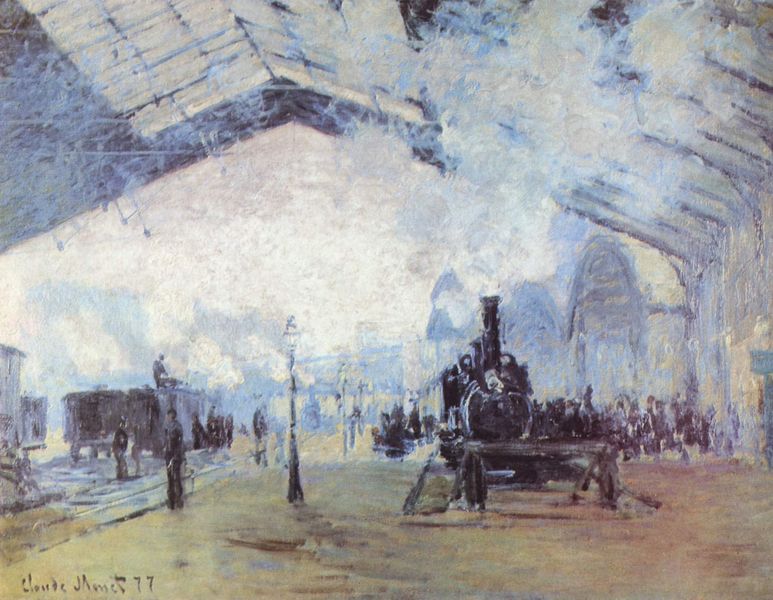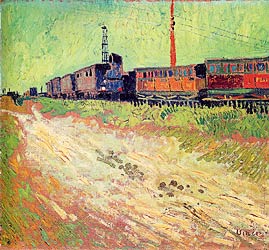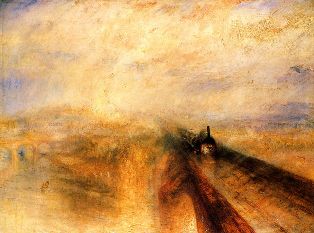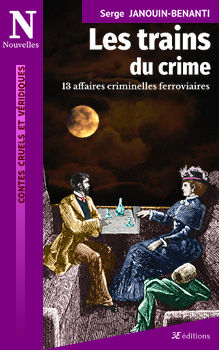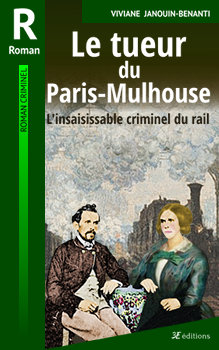The train and crime
The train, that world that goes from town to town, that takes its passengers on a journey between crowded stations where crowds and their secrets have fascinated us for nearly 200 years. The adventure of the first voyages, the isolation in the wagon, the forced cohabitation – even in the hushed atmosphere of the first class –, the phantasm of the amorous encounters, the anguish in the night trains, favourable to the crimes, very early inspired many writers.
The journalists, first chroniclers of crimes and mysteries in trains
It was the journalists who excelled in the genre first, taking to heart all the criminal cases that were taking place on the trains, tracking too, like the police, potential assassins. They will open heated debates on safety, or rather the lack of safety in trains, which will ignite the whole of France.
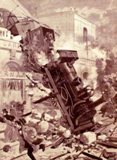
Crime, the cause of improved comfort and safety in trains!
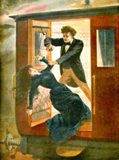
At the beginning of the railway, there was no corridor from one compartment to another. Each compartment was self-contained and the passenger had to enter and go out through a door giving directly onto the track. Therefore, each compartment was isolated during the trip.
Following several crimes committed in trains, particularly in first class compartments, journalists will open debates on improving safety in trains.
Thus, the crimes of Charles Jud, abundantly relayed by the press, are at the origin of the introduction of the alarm signal in the wagons.
Later, with the assassination of Prefect Barrême, lthe debate rebounded, the alarm system did not prevent all crimes, other solutions had to be proposed.
Some recommended that a railway employee lock each filled compartment. He would have reopened them at every station. The idea was that once an assassin had accomplished his crime, he could no longer escape. One was opposite to them the argument of the loss of time at the station and especially the risk for passengers trapped in the event of an accident. No one had forgotten the disaster at Meudon where more than fifty people had perished in the flames, trapped in their locked wagons.
There were also those who asked for windows between the compartments to see what was happening in the neighbouring compartments. There, it was a general outcry. "How will the newlyweds who need privacy do? "critics shouted. The suggestion was abandoned.
Others put forward the idea of putting a corridor, allowing the controller to check if everything was going well in the compartments, by comings and goings, as it was done in the German trains and the American trains. The minister was outraged, it was unrealistic, it would lead the railways and France to ruin! Ultimately this idea was retained, it would lead to modern trains.
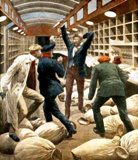
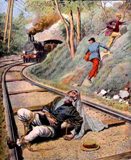
The atmosphere of trains and railways as the backdrop to detective novels
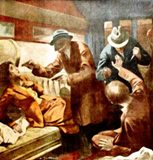
Gradually the authors in need of mystery took over, or rather competed with the journalists.
The speed of the new means of transport, the exasperation of human passions in a closed universe will become essential keys to novels, especially what will be called from the beginning, rightly, novels of station. The different social classes divided into first for the well-off, second for civil servants and third for the working classes, this mix in trains despite everything, because everyone is in stations, ordinary trains, like luxury trains, everything will be a matter of romance.
At the birth of the railway, the train was the symbol of power and speed. Imaginary detectives, such as Sherlock Holmes, will therefore quite naturally take the train. Holmes and Watson develop their theories to catch the culprits on the trains.
Thanks to train schedules, investigators are able to solve criminal cases. So much so that detectives now have as their breviary the railway indicators: the Chaix in France or the Bradshaw in England.
In Émile Gaboriau's novels, his detective, Tabaret, makes full use of railway indicators to find the assassin. Thus in the Lerouge case, he dismantles all the movements of the suspect, thanks to the railway schedules.
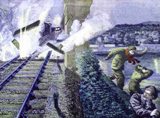
In the 32 novels that feature Fantomas, the anti-hero of Pierre Souvestre and Marcel Allain, between February 1911 and September 1913, Fantomas' route will constantly cross the railway. The king of crime is rampant in transport and especially in trains. This is the case in Un roi prisonnier de Fantomas, La Mort qui tue, L’évadée de Saint Lazare, L’assassin de Lady Beltham ou Fantomas rencontre l’amour.
Arsène Lupin, another legendary figure in French crime fiction, is not to be outdone.
And of course, we must also mention all the trains in Georges Simenon's work, including Train de nuit, which he wrote under a pseudonym. Maigret, his famous commissioner, lives in the trains, conducts his investigations in the trains and above all solves investigations there. Better than anyone at Simenon could make the atmosphere of the train magical.
Like the French authors, the Anglo-Saxon authors used trains to the full, just quote Victor Whitechurch and his Thrilling Stories of the Railways, or Agatha Christie with The Plymouth Express, 4:50 from Paddington, Murder on the Orient Express…
"True Stories" - railway crime cases in novels and short stories
Alongside pure fiction, affairs of state, such as the assassination of Prefect Barrême, mysteries never solved, such as the first bloody trunk, the most unusual railroad facts, exceptional criminals, will fascinate Serge Janouin-Benanti in Les trains du crime.
Other writers have been freely inspired, without explicitly citing them, by real criminal cases, such as Agatha Christie for Murder on the Orient Express, where she refers to the kidnapping of Lindbergh's son and the terrible snowy winter of 1929, which immobilized the Orient-Express.
Others expressly refer to the characters whose lives they tell, and in romanticized form, bring out the psychological springs that animate them.
The literary creation joins the real, so the criminal Charles Jud whose life Viviane Janouin-Benanti tells in Le tueur du Paris-Mulhouse inspired the character of Fantomas. Fantomas is in a way the romantic ideal of Charles Jud, Le tueur du Paris-Mulhouse.
James Cain on his side imagines a plot about a murder camouflaged in suicide on the rails in his novel Double Indemnity. On the contrary, the short-story Sacrifice ultime tells the surprising Dutfoy affair, the true story of a ruined man who committed suicide on a train, so that it would pass for murder, so that his wife could get the numerous life insurance policies he had taken out…
Trains and crime in realistic novels
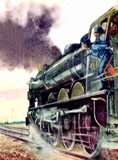
At this stage, it is not possible not to mention La Bête Humaine (The Beast in man) from Émile Zola, the most beautiful book to talk about trains and crime. One cannot resist quoting from it:
Jacques Lantier is a mechanic on a locomotive, we go to see him while he came to visit friends. He walks in the countryside along the railway. A train appears.
"First Jacques saw the dark mouth of the tunnel light up, like a gaping furnace filled with blazing firewood. Then, accompanied by its own cacophonous din, the engine burst forth, dazzling the darkness with its great big round eye, as the front headlamp bore into the black countryside and illuminated the oncoming rails with a double line of flame. But the apparition vanished like lightning: all at once the coaches followed, one after another, the small square windows in the doors passing in fitful flashes of light, revealing each compartment fill with passengers, in such vertiginously rapid succession that the eye was left to doubt the reality of these images so fleetingly glimpsed. And in that split second Jacques very distinctly saw, in the flaming light of a coupé window, a man pinning another man down on the seat and planting a knife in his throat, while a dark shape, perhaps a third person, perhaps some tumbling luggage, was bearing down with all its weight on the flailing legs of the victim. Already the train was gone, disappearing into the distance in the direction of La Croix-de-Maufras, and all that could be seen in the darkness were its three rear lights, the red triangle.
Rooted to the spot, the young man continued to gaze after the train, as its thunder receded into the vast, dead silence of the countryside."
